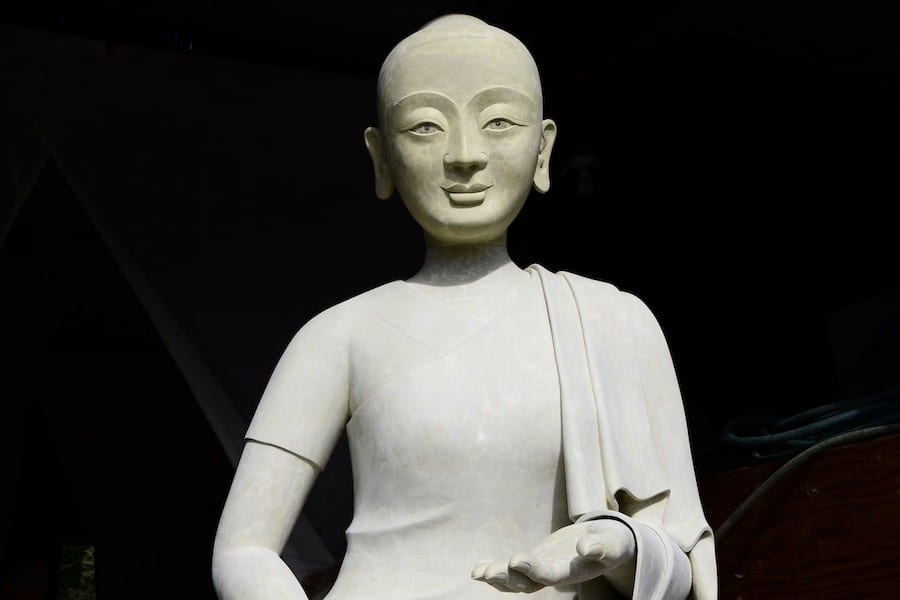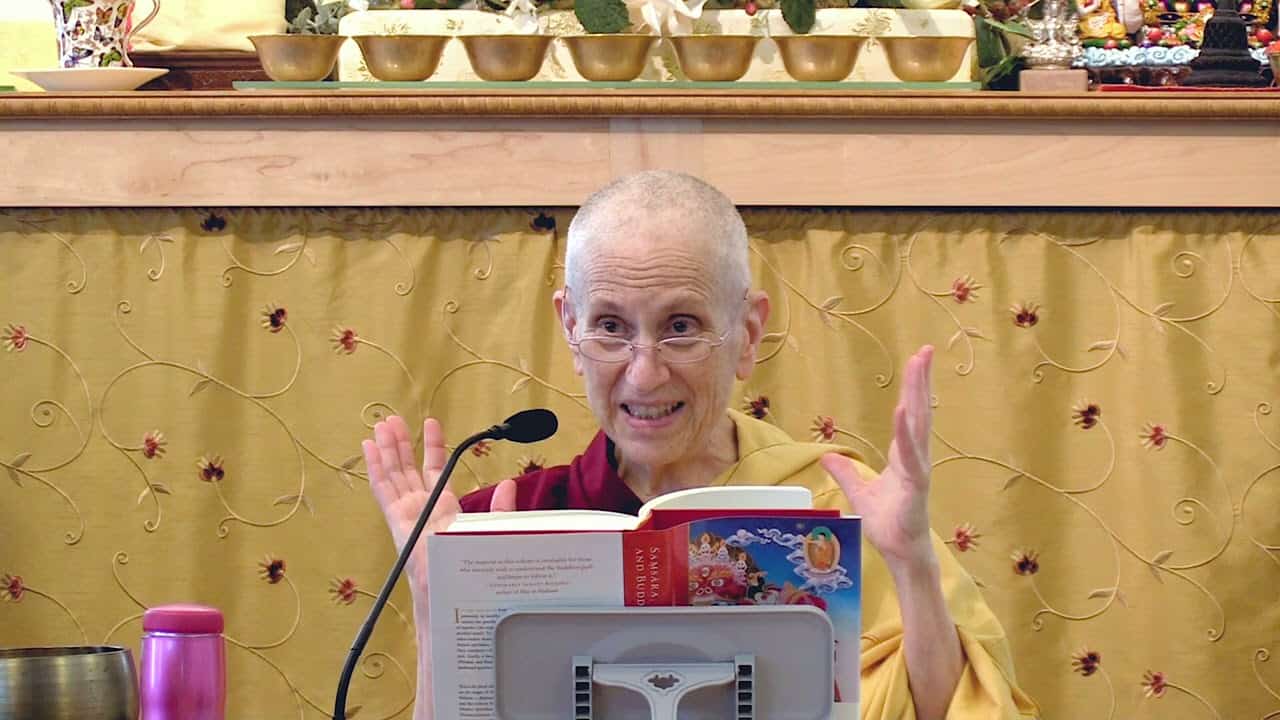Four attributes of true origins
10 Samsara, Nirvana, and Buddha Nature
Part of an ongoing series of teachings (retreat and Friday) based on the book Samsara, Nirvana, and Buddha Nature, the third volume in The Library of Wisdom and Compassion series by His Holiness the Dalai Lama and Venerable Thubten Chodron.
- Expressing appreciation for the kindness of others
- Is focusing on aversion over desire arbitrary?
- How the four distorted conceptions lead to rebirths
- Four attributes of true duhkha build upon one another
- Practice of four establishment of mindfulness
- True origins, craving and karma
- Causes, refutes the idea duhkha is random or without a cause
- Origins, dispels the notion duhkha comes from only one cause
- Strong producers, refutes the idea duhkha arises from discordant causes
- Conditions, dispels the notion duhkha is fixed and unalterable
Samsara, Nirvana, and Buddha Nature 10: Four Attributes of True Origins (download)
Contemplation points
- In your own life, observe how things come about due to causes and conditions. Let this help you come to the conclusion that samsara at whole is undesirable. There may be pleasures in samsara, but when they give way to pain, note they aren’t truly pleasure. Contemplate how this further spurs us towards thinking that nothing in samsara is ultimately pleasurable. When we have that awareness it helps us to be calmer in our lives because we see the importance of getting out of samsara. Because samsara as a whole is unsatisfactory, our problems in this life are not as big of a problem as samsara itself.
- Look in your own mind. When your mind has been full of craving, how have you acted in response? What predicaments have you gotten into?
- What is the purpose of the mediation on the foulness of the body? What does it counteract and why? What is the mental state the Buddha is trying to lead us towards?
- Do you feel like you are produced by causes and conditions? Do you feel you exist just because of the causes and conditions that produce you? Or do you feel a real sense of “I?” Examine this.
- Trace back one event such as your first day in school as a child. What causes contributed/caused your 1st day in school? What gave you the ability to sit in class, to understand the teachers instructions, to keep sitting, to even breathe? Soon after, maybe on the first day or some days later, you may have faced your first undesirable experience. Really think about how our experiences change.
- Reflect:
- Remember a situation in which you had strong animosity toward someone. Observe how you believed that person to be fixed and unchanging. It seems as if all he has ever been or done is condensed as that horrible person who harmed you.
- Ask yourself if this is true. Is the person frozen in time like this? Or does he change depending on causes and conditions? Is there an independent person who always has been and always will be the image you currently have of him?
- Seeing that the person is neither permanent nor independent, allow your anger to dissipate. Enjoy the feeling of being free from hurt and anger.
- Why is it important to meditate on the four attributes of true origins: that things arise due to causes, the causes produce a strong result and depend on conditions, and the conditions have to be concordant? What understanding is this contemplation leading us toward?
- Spend some time meditating on the chart in the text to familiarize your mind with the material.
- Reflect:
- Examine the role of craving in your life. What do you crave? Do these things actually satisfy you when you get them?
- Does craving come from outside yourself? Is it from a creator, another person, the object you crave? How is craving related to ignorance?
- What do you do under the influence of craving? What are the results of these actions?
- Make a strong determination to overcome ignorance and craving by practicing the path
Venerable Thubten Chodron
Venerable Chodron emphasizes the practical application of Buddha’s teachings in our daily lives and is especially skilled at explaining them in ways easily understood and practiced by Westerners. She is well known for her warm, humorous, and lucid teachings. She was ordained as a Buddhist nun in 1977 by Kyabje Ling Rinpoche in Dharamsala, India, and in 1986 she received bhikshuni (full) ordination in Taiwan. Read her full bio.


